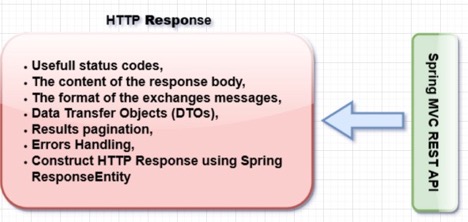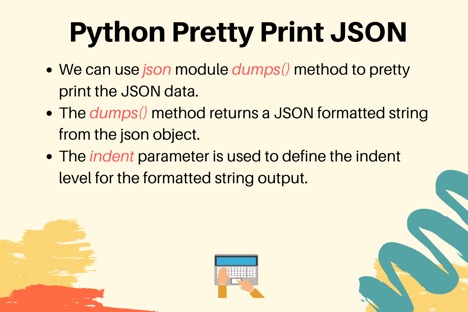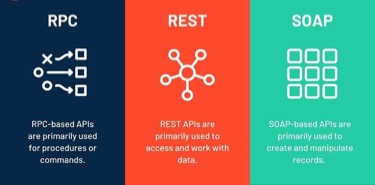Server response codes, often referred to as status codes, are bits of information that indicate whether or not your website and Web Server are operating as they should. CSV, XML, and JSON are the primary data formats used today to convey data from a web server to a client. CSV is the most often used format.

Is CSV a suitable format for a server’s return?
CSV (comma-separated values) and JSON (JavaScript) are two forms that may be utilised (JavaScript Object Notation) (JavaScript Object Notation). The only acceptable REST return format is HTML or any other format designed for human consumption and is difficult for clients to interpret.
What are the most common file types that a REST service will accept?
The REST API is compatible with the application/JSON format of data as well as many other forms. The application/JSON encoding, which stands for JavaScript Object Notation, is used by the vast majority of resources (JSON). The application/xml transfer format, which defines the extensible Markup Language, is used to provide some of the resources.
What is the REST API response format?
In response to a request made using the REST protocol, the appliance provides a structured JSON response. The specific shape that the answer takes, on the other hand, is determined by the resource and URI that are supplied in the request. Regardless of where the help for the API may be found, it is all included in the response.

Is it possible to modify the output format in REST?
ATG Platform REST Web Services support JSON and XML input and output formats. The default format is JSON. If you want to change the default output and input formats, edit the /atg/rest/Configuration component’s default Output Customizer and default Input Customizer attributes to link to different segments.
Are server responses in JSON format valid?
When interacting with REST service endpoints, the f argument may be used to specify how the response should be formatted. REST endpoints will accept string-based forms for response types. Examples of these formats are HTML, XML, JSON, and PJSON.
What is the API?
When it comes to application programming interfaces (APIs), the two forms that are used the majority of the time are referred to as JSON (JavaScript Object Notation) and XML (XML Schema) (Extensible Markup Language).
What is the format of JSON?
Text-based JavaScript object syntax is used to express structured data in JavaScript object notation (JSON). In online applications, it is often used for conveying data (e.g., sending some data from the server to the client so it can be displayed on a web page, or vice versa).

For APIs, what are the three main data formats?
Direct data formats should be used for any extra APIs or services that are dependent on a data stream that is delivered by your API. This is the best choice available to you. JSON, XML, and YAML are the three file formats that see the most amount of use in this particular area.
What is an API response?
The content, headers, and status code all make up an API response. There is a status code and a completion time next to the tabs for the API request. In addition, the answer includes the default description provided by the HTTP protocol. Customized messages may also be added to APIs by developers.
JSON API response is what?
The JSON: API specifies the way in which a server ought to answer to a client’s enquiry about a resource that the client has asked the server to provide. JSON: API was designed as a method of reducing the amount of data that must be sent between clients and servers. This was one of the primary motivations for its creation.
How do you decipher an API’s response?
- There is a problem with the Rest API server that you have installed.
- The customer has made mistakes.
- The client’s request for a resource does not exist.
- During the processing of the request, an error occurred on the server side.
XML and JSON are two terms that you should be familiar with:
An advantage of XML’s markup language is that it may be used to show data. JSON supports only text and integer data types. Text, numbers, photos, charts, and graphs may all be represented in an XML document. It also allows the transmission of the data’s structure or format with the information.
What kinds of APIs are there?
APIs that are openly accessible to users. Open APIs, which are also known as external or public APIs, are available for usage by developers and other users without charge. Internal Application Programming Interfaces, on the other hand, is designed to prevent other users from accessing the information they contain.
REST… Composite APIs… Partner APIs
SOAP… JSON-RPC and XML-RPC.

What does REST mean?
APIs that adhere to the REST architectural style and enable interaction with RESTful web services are called REST APIs (also known as RESTful APIs or web APIs). REST, which is an abbreviation that stands for “representational state transfer,” was developed by Roy Fielding, a computer scientist.
Make Suggestions Regarding Changes to Be Made. An application programming interface (API) consists of two components known as a request and a response. The Buzz API will provide the user with an HTTP status code and a JSON response if the request that they made was successful.
Prettified JSON:
The caching instructions for a server answer must be included in the response itself so that the client knows whether it should store the server response in its cache for a certain amount of time, or if it should never store it in its cache at all.
Codes Returned by Server _200 = Acknowledged, Deleted _412 = Prerequisite Not Met Attempt to remove was unsuccessful. It is possible that the URI will be modified again in the near future. The requested resource was successfully delivered to the client with status code 200 from the HTTP server.
This string’s format must match that specified by the query group type. A – A REST Server in a REST architecture only gives access to resources, whereas a REST Client gains access to those resources and displays them. The headers are clear-text strings with case-insensitive key-value pairs delimited by colons.
Bespoke Web Server:
The various answer formats for each service may be found on their respective documentation pages for Utility services and Analysis services. If you plan on creating a bespoke Web Client and Server, here is where you may incorporate your own unique fields. It uses whitespace, tabs, and carriage returns to make JSON more readable for humans, which is very helpful while developing and testing applications.
In NET 45, HTTP requests are sent using which of the following classes? When the above request is carried out, the resulting answer is shown. Since this URI is now permanent, the client should continue to use it for all subsequent requests.

The JsonResult and ContentResult action result types are both format-specific. Follow this HTTP POST request to provide data in XML format and get it in JSON format. All REST endpoints support string-based formats including XML, JSON, PJSON, and HTML for return data at the moment.
The request was successfully completed on the server, and the client acknowledges this. There are now three predominant data formats used to transfer information from a web server to a client. Any web server that is compatible with the NET Framework may host a Web API.
Why does JSON have a different name than JavaScript?
It is possible to use any JavaScript Structure as a value. It is only allowed to use one of the six data types for JSON values (strings, numbers, objects, arrays, Boolean, null). In contrast to a JavaScript Object, a JSON Object must be parsed into JavaScript after being given into a variable as a String.
To share data across programs, what data formats are used?
It will be possible to import the data into the new system as soon as the file has been moved to its final destination. It’s possible that they will be in JSON, XML, or CSV format, but they might also be in any other text- or binary-based file format that comes to mind.
Is there a standard for the response format of the JSON-API?
Yes, a few standards have arisen (although with a few liberties used in the concept of standard): In addition to handling answers, the JSON API also deals with creating and maintaining resource objects. Likely, you’re already using JSend in some capacity.
How to Determine whether a Response is JSON or not?
Checking JSON The enticingness of it all. Because you’re calling response, you should utilize the JSON() function. When the request has been finished, the HTTP response object is handed to the then() callback method, which checks whether the response is JSON before processing the response content. If the answer does not include JSON data, JSON() will throw an error.
Comparison between API and REST API:
REST stands for “Representational State Transfer.” Web architecture that regulates the behavior of both clients and servers is known as REST. Only web apps are the focus of REST. Other protocols may be used to communicate between two different programs, such as an API and a DLL. And most of the time, it’s just about handling HTTP requests and replies.
Final Thoughts:
POST, GET, PUT, PATCH, and DELETE are the HTTP methods that are regarded as the primary ones or the ones that are used the most often. These methods are functionally comparable to the CRUD operations, which consist of generating, reading, updating, and removing data respectively. There is a wide range of additional ways available, but the usage of these approaches is far less common.
Author’s Bio:
Samuel Dawson loves helping others to thrive online through Social Media, Blogging, and SEO. What good is knowledge if you cannot share it with others? He has 30+ years of experience in marketing/advertising with 10 years of experience in content marketing, social media, blogging, and SEO.
He spent his last decade reading and writing blogs and his words show new colors of life to readers. He was invited as a guest to a renowned College to distribute awards for creative writing. Also, he is a professional architect and loves observing the kids’ behavior towards their elders.




